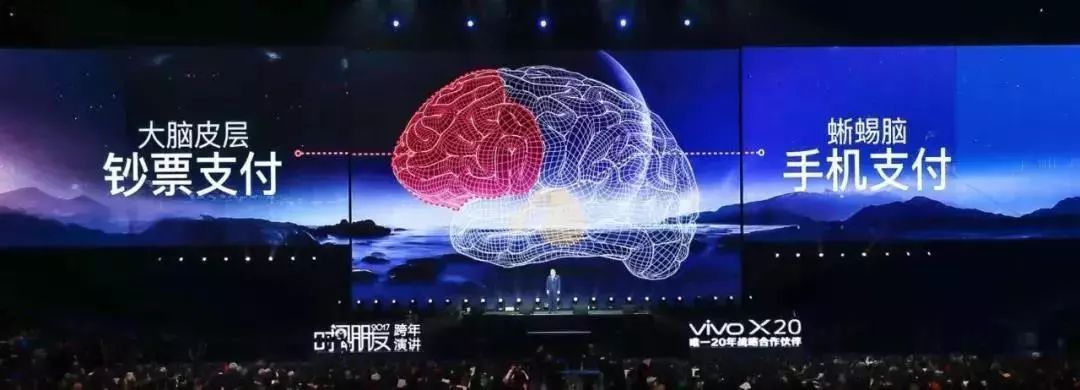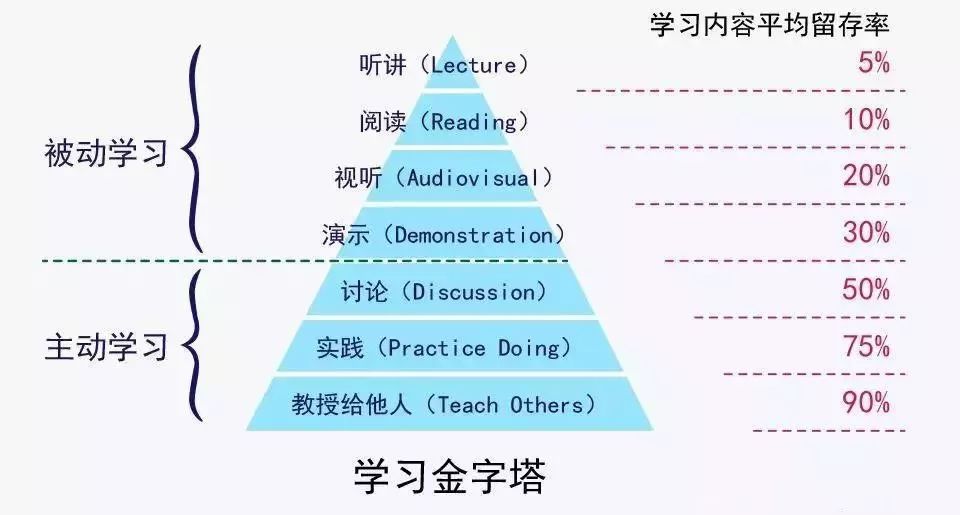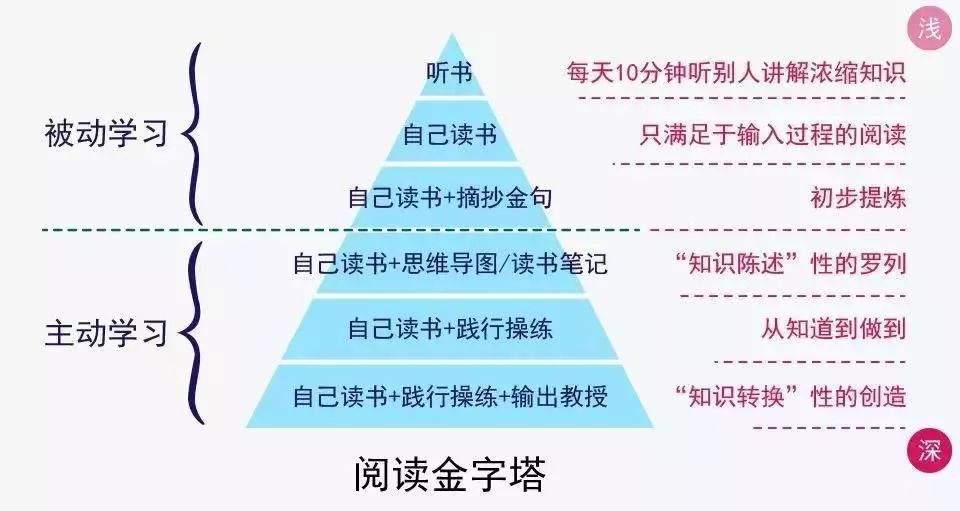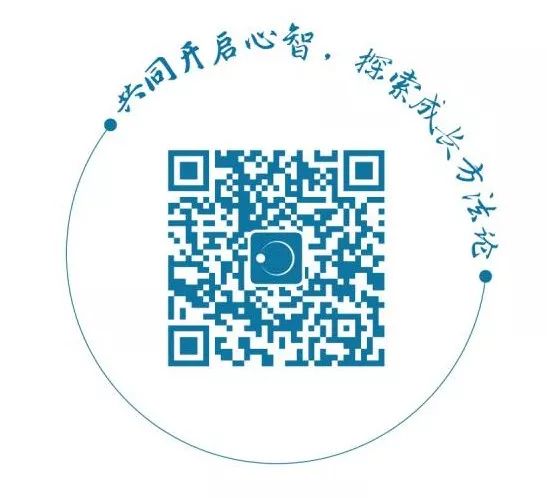求信息管理方面的一篇文章,英文原文,中文翻译
Posted
tags:
篇首语:本文由小常识网(cha138.com)小编为大家整理,主要介绍了求信息管理方面的一篇文章,英文原文,中文翻译相关的知识,希望对你有一定的参考价值。
要有关信息管理方面的一篇文章,英文原文,中文翻译。中文最少要三千字。
一、什么是知识管理和企业管理要弄清以上问题,首先,我们要从弄清什么是知识管理和企业信息管理入手。美国生产和质量委员会(APQC)对知识管理定义如下:知识管理是组织有意识采取的一种战略,它保证能够在最需要的时间将最需要的知识传送给最需要的人,这样可以帮助人们共享信息,并进而将其通过不同的方式付诸实践,最终达到提高组织业绩的目的。企业知识管理是以信息为基础的活动,通过组织性学习创造隐性和显性知识,并负责如何在适当的时间、适当的地方拥有适当的知识。微软总裁比尔盖茨认为:知识管理并不是从技术开始的,它始于商业目标、过程和对共享信息需要的认识。知识管理只不过是管理信息流,把正确的信息传送给需要它的人,以便让他们迅速地以信息为依据采取行动。
中外学者普遍认为,信息是企业发展的一个非常重要的资源,信息作为资源,除了一般的可利用、有价值等特性外,还具备共享性、历史积累性、时效性和多次再生性的特性。而系统则是由若干相互联系、相互制约的独立成分组成的一个有机整体,如管理人员、生产工人、工艺、技术、管理、方法和组织机构、生产设备等,为了一个共同的目标即获取利润生产出社会需要的产品,而组成的一个生产企业就是一个系统。那么,要系统地利用信息这个资源,企业建立信息管理系统是一个非常重要的前提。
企业信息管理系统(EIMS)就是运用现代化的管理思想和方法,采用电子计算机、软件及网络通讯技术,对企业管理决策过程中的信息进行收集、存储、加工、分析,以辅助企业日常的业务处理直到决策方案的制定和优选等工作,以及跟踪、监督、控制、调节整个管理过程的人机系统。
从目前已经大量应用的各种企业信息管理系统来看,普遍具有以下特性:
1.除了通用的管理软件和MRP(物料资源计划)、OA(办公自动化)、WFS(工作流系统)外,大多软件都需要做大量的需求分析,咨询顾问(多数都是行业内的专家)和企业各级员工在认真总结以往经验和企业发展要求的基础上,根据企业实际量身定做或在标准版本的基础上根据企业实际做大量的修改,所以具有行业专家特性及实际应用特性。
2.多数系统是从企业战略的角度出发,在全局和总体考虑的前提下设计企业的信息管理系统,是从企业的人员机构管理、产品管理、系统权限管理、销售管理、采购管理、生产管理、质量管理等系统的角度,考虑战略的实现性和信息之间的关联性、制约性的,具有系统性和整体性。
3.具有历史知识的积累性和共享性。企业的信息管理系统能够将各部门和各员工的日常工作的关键数据,存储在数据库中,并能根据权限方便查阅和调用。
4.具有决策的支持性。所有的各种数据可以经过计算机的处理从不同的角度得到各种分析结果,并通过报警提醒的方式,使决策者在第一时间得到相关信息。
5.动态特性。由于信息的时效性和关联性,当系统中某一信息要素发生变化时,与之相关联的其他信息均发生变化。同时,由于企业的外部环境和内部要素均在动态发生变化,系统也要求能够适应这种变化。
二、企业信息管理系统的作用
从以上对于知识管理和企业信息管理系统的概念及特性等可以看出,企业信息管理系统对于企业知识管理水平的提高具有很大的支持和保障作用,具体表现在:
1.发布知识,确保组织内的每个成员都能共享。在没有计算机、软件和网络通讯技术的前提下,企业发布知识的手段通常采用开会、发文件及书籍等手段,除了发布成本高而外,知识的传播速度、传播量、更新、查阅及查阅权限等等受到极大的制约。而企业信息管理系统则有效地解决了这些问题,使知识信息交易成本大大降低,交易质量和效率大大提高,有力地发挥了知识在企业中的生产力作用。
2.确保知识获得的及时性。信息管理系统解决了跨地区、跨时间、跨单位、跨部门、跨员工之间的查阅障碍,只要是在有权限的前提下,知识需求者可以迅速通过系统找到自己需要的各种知识。例如目前的企业信息门户(EIP-EnterpriseInformationPortal)可以解决企业之间的信息及知识交流问题,另外企业信息系统可以与相关的网络连接,并自动按照组织内部成员对信息的需求进行筛选、分类和收集,并按照成员对信息的需求及时传送给需要的人,以解决知识时效性的问题。
3.提升组织或个人的隐性知识为显性知识,并保证两者之间的有效转换。在企业没有信息系统之前,员工的知识和经验仅存在自己的脑子里,部门的知识也在这个部门里,信息呈现孤岛状态。遗忘、人员流失和成员之间交流不畅导致企业的知识大多是隐性知识,而不能转变为显性知识,组织的知识难以积累。组织随着人员的流动、时间的推移不断地交学费,企业不能形成经验曲线,生产效率和竞争力也就难以提高。信息管理系统使个人知识得以沉淀,成员之间的知识得到共享和交融,企业对员工的过分依赖性降低,从而避免企业因某些关键岗位人员流失出现不可收拾的局面。
三、如何做好企业的知识管理
首先,我们要抓好企业的信息管理。知识管理着重于显性知识和隐性知识的相互转化,因为企业只有把国内外和自己企业积累的知识和经验即显性知识,通过归类、整理、提炼迅速传递给需要它的员工,即转化为员工个人的知识———隐性知识,并运用到每项工作中去,才能对企业目标发生作用。信息管理主要集中在对已有的如书面化的、电子信息等显性知识的管理,在信息增值链上,要将数据提升为信息,并对其进行采集与选择、组织与程序、压缩与提炼、归类与导航等,对信息外部特征的加工和组织。在信息管理基础上,在根据企业和员工需求,对信息内容进行提炼、比较、挖掘、分析、概括、判断和推论等进行知识管理。
其次,要建立知识共享系统。知识管理是以共享和创新为主要目的,重点解决信息超载而知识匮乏的问题,重视人与人产生知识过程的管理。知识如果不拿出来与他人共享,将导致:(1)核心信息掌握在具体实施人员中,管理失控。(2)企业人员外流导致知识资产流失,大量核心技术被带走。(3)知识孤岛造成协调困难,效率下降。所以,在企业信息系统建设中,要坚持以获取企业内部和外部知识资源为核心;以产品的生产流程为核心;以个人知识与团队知识的相互交流和转化为核心;以正式交流与非正式交流的相互接轨为核心;以解决实际问题为核心;以价值链的不断增值为核心和以技能培训为核心。
最后,把信息化建设作为知识管理的平台。传统的金字塔式组织结构和人际交流模式在很大程度上不适合现代社会对知识的快速组织、整合和共享需要,计算机网络则为知识的获取、组织和共享创造了一个全新的平台。企业在网络平台下,形成一种柔性的与变化的组织和扁平化的信息传递渠道。从知识管理的角度,建立信息管理系统,使人与知识资源有机结合,它将人、知识与现实工作任务整合起来,必将为企业管理带来实效。
First, anything is the knowledge management and business management must clarify the above question, first, we must from clarify anything are the knowledge management and the enterprise information management obtain. The US produces and the quality committee (APQC) is as follows to the knowledge management definition: The knowledge management is one kind of strategy which the organization adopts consciously, it guaranteed that the knowledge which can in most need the time which will need most to transmit for the human who most needs, like this may help the people to share the information, and then puts to it through the different way to practice, achieves the enhancement organization achievement finally the goal. The enterprise knowledge management is take the information as the foundation activity, through the organized study creation recessiveness and the dominant knowledge, how and is responsible in the suitable time, the suitable place to have the suitable knowledge. Microsoft president Bill Gates thought: The knowledge management is not starts from the technology, it begins in the commercial goal, the process and to shares the understanding which the information needs. The knowledge management just manages the information flow, for needs it the correct information transmission the person, with the aim of letting them take the action rapidly take the information as the basis. the Chinese and foreign scholar generally believe that the information is enterprise development very important resources, the information takes the resources, besides general may value characteristics and so on use, have, but also has sharing, the historical accumulation, the effectiveness and the multiple reproducibility characteristic. An organic whole which mutually but the system is by certain mutual connections, restricts the independent component which composes, like administrative personnels, production worker, craft, technology, management, method and organizations and agencies, production equipment and so on, for a common goal is the gain profit produces the social need the product, but composes a Production enterprise is a system. Then, must use information this resources, the enterprise message creation management system management system is a very important premise systematically. the enterprise information management system (EIMS) is utilizes modernized the management concept and the method, uses the electronic accounting machine, the software and the network mechanics of communication, carries on the collection, the memory, the processing, the analysis to the business management decision-making process's information, by is auxiliary the enterprise daily handling of traffic until the decision scheme formulation and optimal and so on work, as well as track, surveillance, control, adjustment entire management process man-machine system. looking from already were at present massive the application each kind of enterprise information management system, has the following characteristic generally: 1. besides the general management software and MRP (material resources plan), OA (office automation), WFS (work class system), mostly the software needs to make the massive demand analysis, consulted consultant (most is in profession expert) and enterprise all levels of staffs is summarizing earnestly formerly experienced and in the enterprise development request foundation, made the massive revisions actually according to the enterprise actual quantity body custom make or in the standard edition's foundation according to the enterprise, therefore had the profession expert characteristic and the practical application characteristic. the 2. most systems are from enterprise strategy angle embarking, in the overall situation and the overall considered under the premise designs enterprise's information management system, is from system's and so on enterprise's personnel organization management, product management, system jurisdiction management, sales management, procurement management, production management, quality control angles, considered that strategic between possibility and information relatedness, conditionality, has the systematic characteristic and the integrity. 3. has the historical knowledge accumulation and sharing. Enterprise's information management system can various departments and the various staffs' routine work essential data, saves in the database, and can act according to the jurisdiction convenience consult and the transfer. 4. has the policy-making support. All each kind of data may obtain each kind of analysis result after computer's processing from the different angle, and through the warning reminder's way, enables the policy-maker to obtain the related information in the first time. 5. dynamic characteristic. As a result of information effectiveness and relatedness, when in the system some essential element of information changes, is connected other information with it to change. At the same time, because enterprise's external environment and the internal essential factor in dynamic changes, the system also requests to be able to adapt this kind of change. two, enterprise information management system's function and characteristic and so on may see from above regarding the knowledge management and the enterprise information management system's concept, the enterprise information management system has the very big support and the safeguard function regarding the enterprise knowledge management level's enhancement, concrete manifestation in: the 1. issue knowledge, guaranteed that in organization's each members can share. In does not have the computer, the software and under the network mechanics of communication premise, the enterprise issued that the knowledge the method usually uses document and books methods and so on holds a meeting, to issue, except issue cost Gao Erwai, the knowledge propagation velocity, the dissemination quantity, the renewal, the consult and the consult jurisdiction and so on receives the enormous restriction. But the enterprise information management system effectively has solved these problems, causes the knowledge information transaction cost to reduce greatly, the transaction quality and the efficiency enhance greatly, has displayed the knowledge powerfully in enterprise's production action of force. 2. guaranteed the knowledge obtains timeliness. The information management system has solved between trans-regional, the cross time, the cross unit, trans-departmental, the cross staff's consult barrier, so long as in has under the jurisdiction premise, the knowledge demand might find oneself need rapidly through the system each kind of knowledge. For example the present enterprise information gateway (EIP-EnterpriseInformationPortal) may solve between enterprise's information and the knowledge exchange question, moreover the enterprise information system may with the related network connections, and according to organizes the internal member to carry on automatically to the information demand screens, the classification and the collection, and defers to the member to transmit promptly to the information demand for the human who needs, solves the knowledge time-limited problem. 3. promotes the organization or individual recessive knowledge is the dominant knowledge, and guarantees between both's active transition. Before the enterprise does not have the information system, staff's knowledge and the experience only have in own brain, department's knowledge also in this department, the information presents the isolated island condition. Between forgetting, the personnel outflow and the member exchange cause enterprise's knowledge mostly are the recessive knowledge impeded, but cannot transform into the dominant knowledge, organization's knowledge accumulates with difficulty. The organization along with personnel's flowing, the time passage pays tuition unceasingly, the enterprise cannot form the empirical curve, the production efficiency and the competitive power also with difficulty enhances. The information management system enables individual knowledge to precipitate, between member's knowledge obtains shares and blends, the enterprise reduces to staff's excessive dependence, because thus avoids the enterprise certain essential post personnel draining has the beyond redemption aspect. do three, how complete enterprise's knowledge management first, we must pay special attention to enterprise's information management. Knowledge management emphatically in dominant knowledge and recessive knowledge mutual transformation, because the enterprise only then accumulates domestic and foreign and the enterprise the knowledge and the experience are the dominant knowledge, through the classification, the reorganization, the refinement transmits rapidly for needs it the staff, namely transforms as the staff individual knowledge - - - recessive knowledge, and using each work, can the business goal react. The information management mainly concentrates to existing like written, the electronic information codominance knowledge's management, on the information increment chain, must the data promotion be an information, and carries on gathering and the choice, the organization and the procedure, the compression and the refinement, the classification and the guidance to it and so on, to information exterior characteristic processing and organization. In the information management foundation, in the basis enterprise and the staff demand, carries on the refinement, the comparison, the excavation, the analysis, the summary, the judgment and the deduction to the information content and so on carries on the knowledge management. next, must establish the knowledge sharing system. The knowledge management is take shares and the innovation as the main purpose, but the key solution information overload the knowledge deficient question, takes the human and the human has the knowledge process management. If the knowledge does not take with other people sharing, will cause: (1) the core information grasps is implementing in specifically the personnel, the management loses control. (2) the enterprise personnel flow out cause the knowledge property outflow, the massive core technologies is carried off. (3) the knowledge isolated island causes the coordinated difficulty, the efficiency drops. Therefore, in the enterprise information system construction, must insist that take gains the enterprise interior and the exterior knowledge resources as a core; Take the product production process as a core; And transforms take individual knowledge and the team knowledge's mutual exchange as the core; Take the official exchange and the unofficial exchange's mutual trail connection as a core; Take solves the actual problem as a core; Unceasingly rises in value take the value chain as the core and take skill training as a core. is final, takes the knowledge management the informationization construction the platform. The traditional Pyramid type organizational structure and the interpersonal exchange pattern did not suit the modern society to a great extent to the knowledge fast organization, the conformity and the sharing need, the computer network for the knowledge gain, the organization and sharing have created a brand-new platform. The enterprise under the network platform, forms one kind flexible and the change organization and the flattening information transmission channel. From knowledge management's angle, the message creation management system management system, causes the human and the knowledge resources organic synthesis, it the person, the knowledge and the reality work mission conformity gets up, will certainly to bring the actual effect for the business management 参考技术A Introduction to Information Management
Information Management
In 2000, the Institute of Medicine in collaboration with the National Academy of Science published a report titled: “To Err is Human: Building a Safer Health System”. The authors estimated that 98,000 people die annually as a direct result of medical errors occurring in hospitals. These deaths are not associated with the day-to-day risk of surgery and medical practice in outpatient clinics. Instead, a significant portion of the mortality is a direct result of poor design and utilization of medical records. Medical Records Kill. To put this number of deaths in perspective, more people die annually because of medical errors then as a consequence of car accidents, breast cancer, or AIDS. Other examples include:
*
One in 25 hospital admissions results in an injured patient.
*
Three percent of adverse effects cause permanent disabling injury; of these one in seven leads to a
patient death.
*
Preventable medical errors account for 12-15 percent of hospital costs.
*
About 23,000 hospital patients die each year from injuries linked to medication use.
*
80% of nurses calculate dosages incorrectly 10 percent of the time, and 40 percent of nurses
make mistakes more than 30 percent of the time.
*
Approximately 180,000 unnecessary deaths and 1.3 million injuries occur from medical treatment in
the United States.
Nearly all of these events are due to errors in data management or interpretation.
Most of this information is contained in a book titled, To Err is Human: building a safer health system. 2000. Edited by Kohn LT, Corrigan JM, Donaldson MS. National Academy Press Washington DC. A recent whitepaper refers extensively to the same ongoing problem.
Building a better system
Information is a broad term and includes all sources of facts and opinions that we use to make decisions (printed, heard, or seen). We are in the midst of a continuous stream of information and are being asked to assimilate and organize these data at a faster and faster rate. This challenge is even more severe to the professional fact finder. As scientists and public, production, and wildlife health practitioners you are active discoverers of facts and ultimately a source of information for the world. In those roles, you must organize resource information and original data so that it is correctly analyzed, and interpreted to be delivered to your eager and demanding consumers.
The health industry (of which we are card carrying members) has grappled with the issue of data integrity for decades and the discipline of Information Management has grown to deal with it . There are professional schools training people to work as specialists in this industry (see our main page). A professional organization, the American Health Information Management Association (AHIMA www.ahima.org ) is devoted to the challenges of collecting information in hospital settings. The United States Animal Health Association and American Association of Veterinary Diagnostic Laboratories have a joint committee devoted to Animal Health Information Systems. The United States Department of Agriculture has The Center for Economics and Animal Health and the National Animal Health Monitoring System completely devoted to the methodologies of collecting, organizing and analyzing animal health data. As this course progresses and as you proceed through the MPVM curriculum, you will take the lessons learned from these groups and their experience and apply them to smaller scale work. Please note that I have focused on monitoring efforts and not at all on research. From an epidemiologic perspective, these efforts are related but they are not identical and there are specifics to research that need to be addressed in a different manner than from monitoring efforts.
The Skills of Information Management
A survey of professionals (both employees and employers) identified 20 skills that were the most important for Information Management specialists. While some of the skills were important technology and computer skills many of them were skills directly related to understanding data. These skills included: defining data elements, understanding how the database or application will meet the needs of the end user, being able to integrate analysis into a database, perform data retrieval, ability to create and use if/then statements, ability to manage data quality, ability to create calculations within a data query, ability to communicate effectively, ability to listen and understand client requests, and an ability to create conceptual models.
Data Quality Management Model
Information or data is a fragile commodity and all steps in the data process need to be carefully mamaged. and the process AHIMA recently published a model for Data Quality Management (www.ahima.org/journal/pb/98.06.html). It is a simple model that will serve as our guide for the class.
Details of the Model
The steps of data quality are APPLICATION, COLLECTION, WAREHOUSING, AND ANALYSIS.
Although we often focus our efforts on the analysis and the subsequent reports it is absolutely, unequivocally essential that significant energy be devoted to obtaining and maintaining good quality data that will be used in analysis. Everyone has heard ‘garbage in – garbage out’. Translated, if the data going into the analysis is bad then the information resulting from the analysis -- no matter how sophisticated and no matter how clever -- will be wrong. This problem is the classic epidemiologic and statistical issue of "Bias".
Application--This defines the reason, approach, and the methods for collecting the data
Collection--This is the process of data collection
Warehousing--How the collected data will be stored and accessed
Analysis--Organizing, summarizing, and reporting the data
The Characteristics of High Quality Data
Accessibility—The data are available and useable.
Consistency—Over the time the data are collected and stored, the data were collected in the same manner. In practice this means that the definitions, formats, and storage media were the same or compatible.
Currency—The data has value to the target audience
Granularity—The dimensions or specificity of the data--crude to fine; an example is the difference between a weight category (crude) and the actual weight (fine)
Precision—The data are collected with the same measuring tool (biased or not) resulting in low variation data.
Accuracy—The data are collected with few biases and are a representation of the true state you are measuring.
Comprehensiveness—The data contain sufficient detail to answer the monitoring or research question.
Definition—The meaning and intent of the data are clearly defined
Relevancy—The data pertain directly to the question.
Timeliness—The data are temporally related to the question.
Application
You will hear the following many times in the course of the MPVM year, but understanding and clearly defining the data application is the key to successfully utilizing the information you collect. Application design is the process of carefully defining: 1) the purpose of the research or monitoring effort and 2) the specific monitoring or research question to be answered. Application design is often an iterative process that includes the following:.
1. Based on an observation or belief, pose a question that can be answered.
Examples include:
Antibiotic resistance in the human population is a direct consequence of the use of antibiotics in animal feeds
Increased levels of estrogen in the environment decrease the fertility of free-roaming ungulates
Removing horses from watersheds can decrease Cryptosporidial infections in people
The primary source of salmonellosis in humans is from meat and poultry
The incidence of catastrophic diseases observed in poultry has increased steadily in the last year
The incidence of debilitating heart conditions in household cats has diminished in the last 5-years
2. Investigate the problem/question by doing a literature and grant search. This will entail library work, web searches,or contacting colleagues or experts in the field.
3. Read the literature and summarize the information and test your question against published information
4. Restate the question or need to more specifically target the data application.
5. Choose an approach to answer the question
6. Define the specific data sets that will be needed to answer the question
While the basic steps of the process are clear cut, there are many ways to achieve the outcome. In many cases, the process is individual and may require little interaction with others. More frequently the process requires that you work within or part of a group. When this occurs, the success of your project lies not only with the quality of the idea but also with your ability to understand group dynamics and the processes of groups.
Carefully dealing with these first steps will define the nature of the other three steps in the data quality model and ensure that the correct data are collected and brought to bear on the question.
深度学习,才是2019的正确打开方式

前言: 人们为什么越学越焦虑、越学越浮躁,懂得很多道理,却依旧过不好现在(别说是一生了)?
问题可能就出在你还没有开启深度学习模式。这篇文章介绍了深度学习的方方面面,供您参考。

找到一篇英文的名家佳作,熟读几次以后,把它翻译成中文,等过了一星期之后,再依据中文反过来翻译成英文,这个期间绝不查阅英语原文。翻译后再与原文比对,找出自己翻译的错误、失误和不够精良之处。
如此反复练习,王云五先生练就了扎实的英文功底,为日后的英语教学和出版事业打下了坚实的基础。
在那个科技、信息远不如今天发达的年代,有限的学习条件迫使人们静下心来转向这种深度学习。
时间拨到百年之后,我们的社会发生了巨变,人类进入了前所未有的物质和信息丰富时代,新奇有趣、轻简浓缩的知识随处可见,人们担忧的不再是无知识可学,而是学不完的知识。
时至今日,恐怕很少有人能向王云五先生这样主动静下心来深度学习了,甚至很多人认为,现今时代的学习已经不必如此「费劲艰辛」,人们有太多的方式可以让自己轻松地获取知识,比如每天听一本书、参加牛人的线上课、订阅名家专栏或参加某某学习群……轻松高效,干货满满,只要自已持之以恒,就定能有所成就。
可惜的是,这种认知注定是一个错觉,因为科技和信息虽然在我们这一代发生了巨变,但人类的学习机能并未随之快速变化,我们的大脑运作模式几乎和百年前一模一样。
更坏的消息是,「丰富的信息和多元的方式」在带来便捷的同时,也深深地损耗着人们「深度学习」的能力,并且这种倾向越来越明显。
罗振宇在2017跨年演讲中提到这样一个事实:
用钞票和用微信/支付宝支付,有什么区别?
表面是更快更方便;实质上,用钞票支付,是在理性决策;用手机支付,是在冲动消费。
购物,越来越不是理性的决策行为,用户用本能花钱,追求的是快感。

种种迹象表明,快速、简便、轻松的方式使得人们低层次的「原始脑」功能得到进一步强化,高层次的「现代脑」功能则进一步弱化,而深度学习能力几乎全部依赖高层次的「现代脑」(大脑皮层)。
商家已经看清了这一点,于是想方设法推出各种代读、领读、听读的产品,让人们瞬间体验到轻松获取知识的快感,并且产生勤奋的感觉。
而现实的情况是:人们越学越焦虑、越学越浮躁,懂得很多道理,却依旧过不好现在(别说是一生了)!
我隐隐约约看到这个世界正朝着两极发展:一小部分知识精英依旧直面核心困难,努力地深度钻研,生产内容;绝大部分信息受众享受轻度学习,消费内容。
就像社会阶层逐渐固化一样,知识阶层也在逐渐固化。如果长期陷于错误的认知或习惯于轻度学习,一旦丧失深度学习能力,将很难打破知识阶层的限制,永远被困在认知低层。
深度学习的能力已经变得越来越稀缺,如果我们真的希望在时代潮流中占据一席之地,那就应该尽早抛弃轻松学习的幻想,锤炼深度学习能力,逆流而上,成为稀缺,否则人生之路会势必会越来越窄。
01
何为深度学习?
1946年,美国学者埃德加.戴尔(Edgar Dale)提出了「学习金字塔」(Cone of Learning)的理论,之后美国缅因州国家训练实验室也做了相同的实验,并发布了「学习金字塔」报告。

资料来源:国家训练实验室 美国缅因州
报告称:人的学习分为「被动学习」和「主动学习」两个层次。
被动学习:如听讲、阅读、试听、演示,学习内容的平均留存率为5%、10%、20%、30%。
主动学习:如通过讨论、实践、教授给他人,能将原来被动学习的内容留存率,从5%,提升到50%、75%和90%。
这个模型很好地展示了不同学习深度和层次之间的对比。
反观自身的学习,我们同样可以清晰地划分出不同的层次。以阅读为例,从浅到深依次为:
听书
自己读书
自己读书+摘抄金句
自己读书+思维导图/读书笔记
自己读书+践行操练
自己读书+践行操练+输出教授

当前有很多听书产品,读书达人用十几分钟解读一本书,一天听一本,一年下来就三百多本,这种便捷新颖、浓缩干货的学习看似轻松高效,实则处于被动学习的最浅层。
好一点的情况是自己读原书,但读完之后却不回顾或少有提炼总结,只满足于输入的过程,这类学习的知识留存率很低。卿不见几天之后就想不起来自己读了什么了吗?更糟的是,这种努力会导致盲目追求阅读的速度和数量,让人产生勤奋的感觉,实际上这是低水平的勤奋,投入越多,损失越大。
初级阅读者不可避免会踩入这两个坑,而另一类浅层次学习的人数也不少,这类人能够自己阅读,也做读书笔记或思维导图,但遗憾的是,读书笔记的内容往往是把书中的内容梳理罗列了一番,看起来更像是一个大纲。
很多人醉心于此,似乎自己对全书的知识了若于胸,殊不知自己只是「农夫山泉」而已——「我们不生产知识,我们只是知识的搬运工!」
虽然这种做法一定程度上属于主动学习,但它仅仅是简单「知识陈述」,与高级别的「知识转换」有很大的不同。
更深一层的是,读书之后能去实践书中的道理,哪怕有那么一两点让生活发生改变,也是很了不起的,因为从这一刻开始,知识得到了转化。
从知道到做到是一个巨大的进步,然而自己知道或做到是一回事,让别人知道或做到又是另外一回事。
不信试着将自己知道的东西向别人清晰地讲出来,你会发现这并不容易,心里想得挺明白,讲的时候就开始语无伦次了,如果再让你把知道的东西写下来呢?你可能根本无从下笔。
请注意,这种困难才是真正深度学习的开始!
因为这必须动用原先所有的已有知识去解释新知识,当你能够把新学的知识解释清楚时,就意味着把它纳入了自己的知识体系,同时达到了教授他人的水平,并可能创造出新的知识!
罗振宇在60秒语音中曾提到他是这样学习的:
我每天要求自己写够五篇阅读心得,不用长篇大论,短短几个词就行。因为真正的学习就像是缝扣子,把新知识缝接到原有的知识结构中,每天写五篇阅读心得就是逼迫自己原来的知识结构对新知识做出反应,然后把这个反应用文字固化下来,缝接的过程就完成了。
「缝合」是深度学习的关键,而大多数人只完成了「获取知识」,却忽略了「缝合知识」这一步,学习过程是不完整的。另,一些人有了一定的缝合,但缝合得不够深入,没有高质量的产出,也使得学习深度大打折扣。
浅层学习满足输入,深度学习注重输出。从想法到语言再到文字,即网状的思维变成树状的结构再变成线性的文字,相当于把思想从气态变成液态再变成固态——那些固态的东西才真正属于自己!
毕竟任何知识都不可避免地会损耗,并且这种损耗一直存在,如果不想办法让自己学到的东西固化下来,时间一长就会烟消云散,留不下多少痕迹。
有了自己的东西,便一定要「教授」出去,「教授」和「缝合」会相互形成巩固和循环。
《暗时间》的作者刘未鹏说:「教」是最好的「学」,如果一件事情你不能讲清楚,十有八九你还没有完全理解。当然,「教」的最高境界是能用最简洁的话让一个外行人也能明白你讲的东西。
可见,逼迫自己通过「获取高质量知识」+「深度缝合新知识」,再用自己的语言或文字去教授他人,是为深度学习之道。
这是我目前能够觉知到最高层次的深度学习了,也许还有更高级的,但对绝大多数人来讲,能做到并做好这一点已经足够了。
02
如何深度学习?
如上,深度学习有三个要素:
获取高质量知识;
深度缝合新知识;
输出成果去教授。
这样的学习必然要放弃「快学」、「多学」的安全感,同时要耗费更多的时间,面临更难的处境,甚至还会「备受煎熬」。
但请一定相信:正确的行动往往是反直觉的,一开始舒服和容易的事往往得不到好结果,而一开始难受和困难的事才能让人真正产生收获。
所以,我们需要逐步改进。
一是尽可能地获取并亲自啃读一手知识。
从读书角度讲,就是读经典、读原著,甚至是学术论文。经典的一手知识已经经过时间的沉淀,价值深度已被证明,值得精耕细读。
把精力集中到符合自己需求的一手知识上,放弃那些「几分钟读完……」「每天一本……」「十堂……课」的干货幻念,虽然那些也能带来一些启示,但终究是支离破碎、被人咀嚼过的。
亲自啃读虽然更艰辛,但唯有亲历过才能感受到深度理解或认知产生的真正快感,比吸收二手知识不知道要爽多少倍。
读书这事最好不要请人代替,从长远看,终归是要自己获得挖矿的能力的,这样才能走得更远。
二是尽可量用自己的话把所学知识写出来。
每读一本有价值的好书,就用写作的方式把作者的思想用自己的语言重构出来,尽力结合自身的经历、学识、角度去解释、延伸,而不是简单地把书本的要点进行罗列。
简单的「知识陈述」无法达到深度缝合的效果,只有做到「知识转换」才能用旧知识体系对新知识进行深度缝合,所以在重构时只取最需要的观点就好了,其它无关的观点可以放弃,即使它们很有道。
真正深度的好文往往与原书没有太大的关系,只是原书触发了思考,引用了案例,最后看来,读书笔记往往是一篇全新的文章,甚至创造了新的知识。
这个过程是渐近的,虽然刚开始说的好像都是别人的观点,但逐渐地就会衍生出自己的观点,虽然起初会有些吃力,但只要持续练习,能关联的经历、观点、案例就会越来越多,对一个主题的思考也会越来越深入。
所以无需求快、求多。如有必要,可以花足够长的时间去打磨一个主题或观点。当一个趋近你当前最好水平的作品打动了别人,所产生的影响力和收获远比每天写但缺乏深度的思考要强得多。
我鼓励大家写作,是因为一旦能写清楚了,就必定能讲清楚,而且文章具有复利效应,可以随时被他人读到,这样也间接地达到了讨论交流和教授他人的目的。
三是反思生活。
学习不止读书,生活经历同样可以被深度学习。
生活中每天发生的事情如水流一样经过我们,不会停留,如不留心,很难留下痕迹,就像最浅层的被动学习,留存率很低,缺少反思的生活难以产生深度。
《好好学习》的作者成甲就非常注重反思,他每天早上大约要花两个小时左右的时间进行复盘反思,而且要求自己的员工也这样做。
他在书中花了大量笔墨阐述了反思的方法和好处,他说:人与人之间的差距不是来自年龄,甚至不是来自经验,而是来自经验总结、反思和升华的能力。
受这个理念的影响,我从去年2月份开始,持续每天反思总结,有时几句话,有时上千字。
通过反思,我发现很多没想明白的事情在反思的时候想清楚了,很多模糊的概念在反思的时候变清晰了,很多看似并不关联的事情居然找到了底层的联通……
持续反思让我对生活细节的感知能力变得越来越强,生活给我留下来的东西也越来越多,或许这篇文章的立意与构思有很多要素也来自平日的反思。
如果让我推荐一个不可或缺的习惯,我必推反思。
03
深度学习的好处
深度学习除了能让我们放弃浮躁,磨练理智,还能带来诸多好处,比如跨界能力。
古典在《你的生命有什么可能》一书中说到,人的能力分为「知识、技能和才干」三个层次:
知识是最没有迁移能力的,你读到医科博士,也照样不会做麻婆豆腐;
技能通常由70%的通用技能和30%的专业技能组成,迁移性要好一些;
而到了才干层面,职业之间的界限就完全被打破了。
这就解释了为什么那些牛人能够轻易地在不同领域之间进行跨界,因为他们已经通过深度学习达到了某一领域的才干层面,而这些才干在其它领域同样适用,所以只需要花少量的时间熟悉知识与技能就能玩得转。
但反过来,如果你在一个领域从未达到过才干层面,当换到其它行业时,只能从底层的知识和技能重新开始,这就非常吃力了。
深度学习能够帮助人们跨界,这毋庸置疑,同时它还能帮人产生灵感。
我们都知道爱因斯坦是在去专利局上班的路上,看到伯尼尔钟楼时,脑中突然冒出了一个假设:「如果公交车以光速移动,那么从车上看钟楼的指针会不会是静止的呢?」这个假设使得20世界最伟大的发现——狭义相对论从此走入人们的视野。而另一个德国化学家凯库勒是在非常疲劳的情况下做了个白日梦,梦到一条首尾相咬的蛇,这条蛇成了他发现了苯分子结构的线索。
人们都惊叹科学家们的直觉和灵感,但假设爱因斯坦是一名理发师,凯库勒是一名管道工,他们就不会获得这些直觉和灵感,因为只有他们在自己的领域探索得足够深入时,灵感才可能在潜意识的帮助下显现出来,这些原理在现代脑科学研究中都得到了应证。
虽然我们不是科学家,但深度学习依然能让人更大概率地收获意外的惊喜。
与此同时,深度学习能让我们在高处俯视,看到一般事物的更多关联,产生洞见,并且积累得越多,反应速度越快。
比如当我深度解读《超越感觉》,知晓正确思考的核心是让自己的主观认知尽量与客观世界保持一致后,我突然对「解放思想、实事求是」这八个字就有了全新的认识——原来我党一直就是这样做的——再看看祖国近年的发展,如此大的事实证明了这个真理是极其正确并重要的——而换作之前的我,肯定是看不到这个关联的。
不仅如此,如果自己在一些领域的认知深度积累得足够多,那么即便是面对影视节目、娱乐八卦、新闻热点这些「腐蚀」人们注意力的事物时,也同样能调动高级认知,把它们与有益的思考关联起来,产生比众人更深刻更独特的见解。
比如前两天我带女儿去看电影《西游记之女儿国》,剧中女儿国国王与唐僧经历生死之后对他说:「我做了一个梦,多年以后,你蓄满长发,和我一起慢慢变老,但是,你并不开心!」
我立即感慨到,这就是「未来视角」啊,国王用未来视角俯视现在,然后做出了理智的决定,克制了自己的感情放唐僧西行。因为一周前,我正好写了一篇关于未来视角的文章《用什么来拯救你的行动?》
换作以前,我肯定是对此无感的,而在女儿眼里,能看到的只是国王好漂亮,猴子好搞笑……
据我所知,很多严肃的成长者同样喜欢娱乐消遣,比如李笑来喜欢看电影,师北宸喜欢看综艺……我敢说,他们身处娱乐时,依旧是「现代脑」在主导,不断地再关联认知,而非单纯地满足「原始脑」的直接需求。
再延伸了说,热点娱乐并非没有价值,浮浅知识也同样具有意义,但前提是:你需要先有足够的认知深度——深度之下的广度才是有效的。
04
为浅学习正名
说了这么多深度学习,那像罗辑思维推出的那些专栏、精品课、听书等产品应该如何对待呢?彻底拒绝或远离吗?
我觉得并不需要,因为深度学习与浅学习其实并不冲突,浅学习也有其价值。
重要的是不要搞反权重关系,我们可以把它作为了解新信息的入口,但不能把成长的过程全部寄托于此。
更合理的态度是:专注深度学习,同时对浅学习保持开放。
选择一些值得关注的人,通过这些平台和他们保持连接。他们释放的一些有价值的信息会引领我们走向更广阔的世界,但无论如何,最终要自己去读、自己去想、自己去做。
就像这篇文章,如果触动了你,也仅仅是为你开启了一个新的视角,最终能否获取深度学习能力只能靠你自己去行动,没有人能够替代。

问对教育,致力于为学校服务。
主要业务有:学校文化设计(包含MIS、VIS、BIS、EIS四套系统)、教师培训(可小班定制)、校长培训(可小班定制)、校本课程研发、教育类文创产品、教育活动策划等,有需求请来电咨询:18980032123(许老师) 18628330132(唐老师)
问对教育学校文化设计案例:
点击“阅读原文”,进入问对微店。
以上是关于求信息管理方面的一篇文章,英文原文,中文翻译的主要内容,如果未能解决你的问题,请参考以下文章